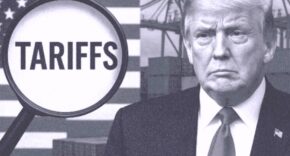For much of the past year, U.S.–India relations were caught in a downward spiral. President Donald Trump had blasted India for purchasing Russian oil and punished New Delhi with punishing tariffs that reached as high as 50 percent. His aides branded India the “Kremlin’s laundromat,” while some even suggested the Russia–Ukraine conflict was “Modi’s war.” Prime Minister Narendra Modi’s government stood its ground, rejecting the tariffs as “unjustified and unreasonable.” Despite the pressure, India defended its energy security, insisting discounted Russian crude was necessary for a nation of 1.5 billion people.
Now the tone from Washington has shifted sharply. Trump is backing away from tariffs on India and instead is focusing his economic anger on China. In doing so, he has signaled that India remains too important to lose and that the time has come to negotiate in good faith.
Trump’s Change in Focus
In his latest public remarks, Trump urged NATO nations to stop purchasing Russian oil and to act collectively on sanctions. “I am ready to do major sanctions on Russia when all NATO Nations have agreed, and started, to do the same thing, and when all NATO Nations STOP BUYING OIL FROM RUSSIA,” he wrote in a fiery letter. While Trump left the decision to his allies, he stressed he was prepared to “go” once they aligned.
The sharpest edge of his message, however, was directed at Beijing. He demanded NATO members place “50 per cent to 100 per cent TARIFFS ON CHINA” and said such tariffs would remain in place until the war in Ukraine ended. “China has a strong control, and even grip, over Russia, and these powerful tariffs will break that grip,” he declared.
What stood out most was that India was no longer mentioned. After months of pairing New Delhi with Beijing as enablers of Moscow, Trump has now spared India from new penalties. This omission has been widely seen as a reversal in strategy.
Warm Words for Modi
Alongside the policy shift came warmer personal words. Trump recently called Prime Minister Modi a “great Prime Minister” and a “dear friend,” marking a dramatic departure from his earlier complaints that the United States had “lost” India to “the darkest China.” His ambassador-designate to Delhi, Sergio Gor, reinforced the new tone. He told senators that Trump has a “deep friendship” with Modi and that trade negotiators were working through the “nitty-gritty” of a deal. “We are not that far apart right now on a deal,” Gor explained, suggesting an agreement could be reached within weeks.
For his part, Modi reciprocated swiftly. He described the United States as a “close friend and natural partner” and said he was confident that negotiations would soon unlock the “limitless potential” of the partnership. His words underlined India’s recognition that a closer relationship with Washington is vital, even as New Delhi has kept open lines to Moscow and Beijing.
India’s Moves Toward China
The past several months have nevertheless seen India test new diplomatic openings with Beijing. Chinese Foreign Minister Wang Yi traveled to New Delhi for talks with National Security Adviser Ajit Doval, and discussions included reopening border trade and resuming direct flights suspended since 2020. Modi also prepared to meet President Xi Jinping at the Shanghai Cooperation Organisation summit, his first visit to China in seven years. These steps followed last year’s agreement on joint border patrols, which helped ease a five-year standoff along the Himalayan frontier.
India’s government think tank even proposed easing investment rules for Chinese companies, signaling an interest in exploring economic cooperation. Beijing responded by stressing that border trade has historically played “an important role in improving the lives of residents along the border and enhancing exchanges between the two peoples.” New Delhi’s foreign ministry echoed the tone, saying India was ready to “facilitate the resumption of border trade through all designated trade points.”
While India and China remain rivals with lingering mistrust, these symbolic gestures carry weight. Images of Modi walking with Vladimir Putin and speaking cordially with Xi Jinping at recent summits rattled Washington, which has long relied on India as a counterweight to Beijing in Asia.
China’s Broader Intentions
China has seized the opportunity to sharpen its global posture. After Trump’s call for NATO to impose sanctions and high tariffs, Beijing fired back, declaring it “neither plots nor participates in wars.” Officials dismissed Washington’s actions as bullying and emphasized China’s commitment to continued trade with Russia. At the same time, China has been pushing to expand its trade reach and promote the yuan as an alternative to the dollar in international finance. Trump’s proposed tariffs are designed to strike at these ambitions by raising costs for Chinese exports and limiting Beijing’s economic leverage.
A Strategic Realignment
The larger strategic picture is clear. Trump’s earlier decision to hammer India with tariffs risked driving New Delhi closer to both Moscow and Beijing. Economists warned that the 50 percent duties could cut India’s annual growth rate by up to 0.8 percentage points, a heavy blow for the world’s fastest-growing major economy. Meanwhile, companies like Apple and Micron had been expanding production in India as part of the “China Plus One” strategy, only to see the cost curve upended by tariffs.
Faced with this reality, Trump appears to have recalculated. By sparing India and training tariffs on China instead, he is working to repair a vital partnership. As one editorial noted, tensions “do not supersede shared interest in countering Beijing.” Trump himself has a record of starting negotiations with tough talk and then pivoting to deal making. India, with its population scale, fast-growing middle class, and expanding role in high-tech supply chains, remains the best long-term partner for Washington.
The new emphasis on friendship and good-faith negotiation suggests that both leaders understand the stakes. If Trump and Modi can translate warm words into concrete trade agreements, the U.S. will succeed in keeping India close. That outcome would be not only a victory for both economies but also a decisive step in the larger contest with China.











